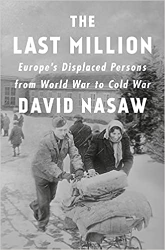Rich, fragrant, enticing, heavenly chocolate — it’s almost too good to be true! Michael Leventhal presents a recipe book filled with spectacular gourmet offerings, lush photographs in color, and fascinating bits of Jewish history that tell the story of chocolate as it relates to Jewish culture and history all around the world. It’s almost too good to be true, but it is temptingly, sensuously, satisfyingly real.
The book’s colorfully illustrated introduction delves into the history of chocolate and chocolate-making, with a particular emphasis on Jewish communities and their many, many connections to chocolate lore. For example, the Spanish conquistadors learned about chocolate from the Aztecs and, when they carried the knowledge home, Jewish traders in Spain, barred by antisemitism from many other trades, developed an enthusiastic market for the spectacular new treat. The French learned chocolate craft from the Jews and then banned them from producing it. In Belgium, a Jewish immigrant was granted the first license to manufacture chocolate. The Caribbean was a Jewish chocolate-making center as early as the 1600s. Chocolate Chanukah gelt, which seems so traditional, was developed in the United States in the 1920s. Chocolate’s delicious history flows onward into modern times.
The sweet center of the book follows this engrossing history: the recipes themselves. Each contains a brief introduction, often including the country in which the recipe originated. The recipes are clear, concise, easy to follow, and are accompanied by scrumptious photographs of the finished products. Classic chocolate rugelach, three different better-than-basic recipes for brownies, unusual offerings such as Chocolate Beetroot Cake, exotic recipes such as Tunisian Chocolate Tart with Mahlab, vegan chocolate chip cookies, Israeli White Chocolate Cheesecake, and so many more. There seems to be no end to the fabulous creativity.
Personal favorites include Tahini Chocolate Chip Banana Bread, truly magical Magic Squares, and the ever-popular babka without which this cookbook would feel incomplete. There’s a section called “Savoury Dishes and Drinks” which includes such unusual international delights as Chocolate Chili and Sicilian Caponata. Who ever imagined that reading a cookbook could be so fascinating?
The only thing that could possibly make this book any better is knowing that all the proceeds are being donated to a charitable organization, in this case, Chai Cancer Care of London. Delicious chocolate, fascinating history, and tzedakah, too? Who could ask for more?
The book is published in the UK, but each recipe has cup, metric, and imperial measurements. A glossary of UK-US terms is also included to avoid confusion and to be sure that as many people as possible are welcomed into this world of chocolate delight. A short biography of each recipe’s contributor is included as well.
For the Epicureans among us, those for whom chocolate is practically a religion, this book is for you. It’s a valuable addition to the cookbook shelf for everyone else, too.
Michal Hoschander Malen is the editor of Jewish Book Council’s young adult and children’s book reviews. A former librarian, she has lectured on topics relating to literacy, run book clubs, and loves to read aloud to her grandchildren.




